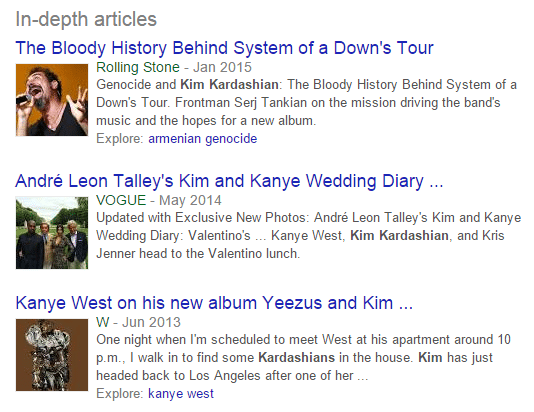In-Depth Articles: Helping Users Come Across the Ungoogleable
-

Aaron Gray
-
 April 27 , 2023
April 27 , 2023 -
 4 min read
4 min read
On August 2013, Google rolled out the in-depth articles feature for its SERPs. This update came to facilitate users with the discovery of new material and content that will help them learn more about a broad topic. It prioritizes websites with long-form content for general subjects.
What’s It For
Google’s algorithm automatically ranks results according to the hundreds of signals it uses to determine high-quality and in-depth content. The search engine has always put its users’ needs first, and this update is no different.
Essentially, the update suggests additional resources that users may enjoy reading to find out more about the query they typed in. The content can range from the latest news to pages with related keywords. When the in-depth articles section in the SERPs first rolled out, it came with a label to inform users of these supplementary materials which were three links initially. The search engine also displayed thumbnails to complement the title and snippet.

Over time, this section of the search engine has seamlessly blended into the standard organic results lending it nearly indistinguishable. Today, the SERP is so information-rich with the Knowledge Graph and Top Stories prominently displayed on the screen.
What Were Its Effects
In the 10,000 queries that Moz monitored after the update rolled out, the team found that 352 searches showed in-depth articles which makes up about 3.5 percent of the sample. With Google’s global volume metric, the search terms were credited for 6.9 percent of total volume for the data set which implied that these keywords generated high traffic volume.
At the time, examples of high-volume searches included “jobs,” “ancestry,” “wedding dresses,” and “smartphone.” As you can see, these search terms were relatively vague unlike well-performing long-tail queries such as “post-traumatic stress disorder” and “department of homeland security.”
News publications did well after the update since their content generally included useful and time-relevant information to most general searches. The New York Times, Wall Street Journal, New Yorker, and Guardian were some of the prominent winners of the in-depth articles update.
What It Means for You
Google has shared tips to improve the chances that your content pops up in the in-depth articles block. Their quality guidelines encouraged site operators to create posts for users first and search bots second. Moreover, the developers will never tolerate tricks and tactics meant to deceive searchers and manipulate the search engine, so it’s best to stay away from black hat techniques altogether.
Aside from following the search engine’s quality guidelines, these are the specific ways to help search bots navigate through your site better and boost the probability of your content being displayed as an additional resource in the SERPs:
- Take Advantage of the Schema.org Article Markup Structured data continues to be a valuable tool used by Google to obtain information from websites. The Schema.org article markup serves as a reference to the tags you should include for your content such as the article headline, alternative headline, body, section, image, description, and date of publication.
-
Use Pagination and Canonicalization Attributes The rel=next and rel=prev attributes are vital for merging indexing properties of content that’s divided into multiple pages while the rel=canonical tag is essential for consolidating URLs that point to the same material. Make sure that you label your pages correctly to give search bots a clear understanding of how you want them to index the pages in your websites.
The Big Daddy infrastructure change helped search bots use the URL that site operators want for their website. It rolled out way back in 2006. You should be consistent in the structure of your links to facilitate this process. Meanwhile, the pagination elements were introduced in 2011 to inform the search engine which pages are part of a series. - Offer More Details on Your Brand Logo As mentioned above, thumbnails were displayed in the in-depth articles section when the first update rolled out. This led to the need for providing additional information on your brand’s logo through the schema.org Organization Markup to signal to search bots what image they can show beside your link in the SERPs.
Now, the search engine no longer displays thumbnails for each result. Nonetheless, it’s still best to specify a logo using the Schema.org markup and use it on your social media profiles consistently.
It’s crucial to note that the authorship markup was once recommended as a best practice for in-depth articles, but it has since been rendered ineffective since the feature has been retired. The idea behind Google Authorship was that author reputations influenced page rankings through digital signatures.

